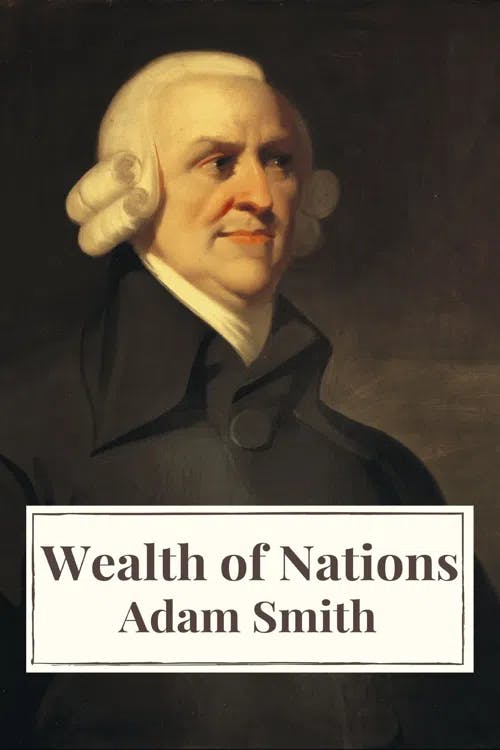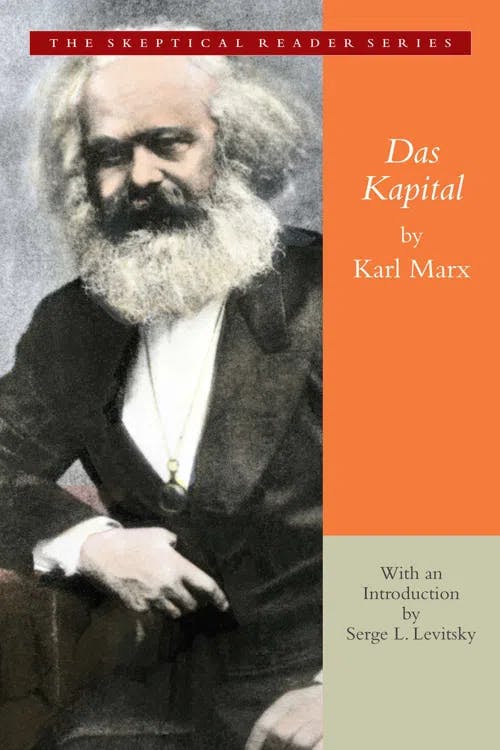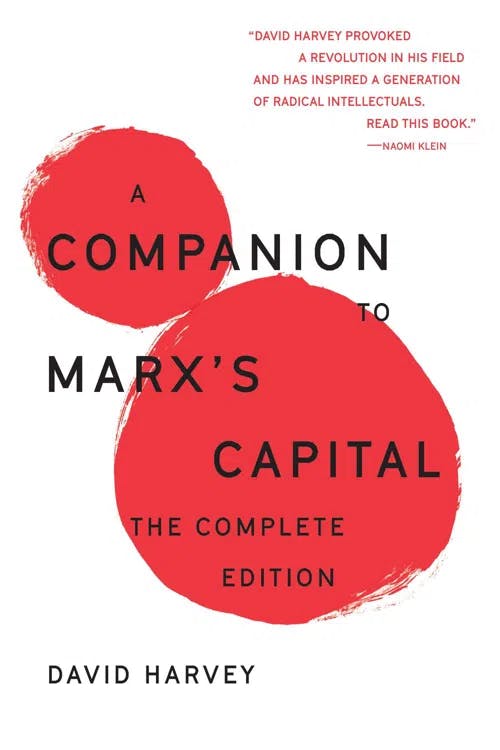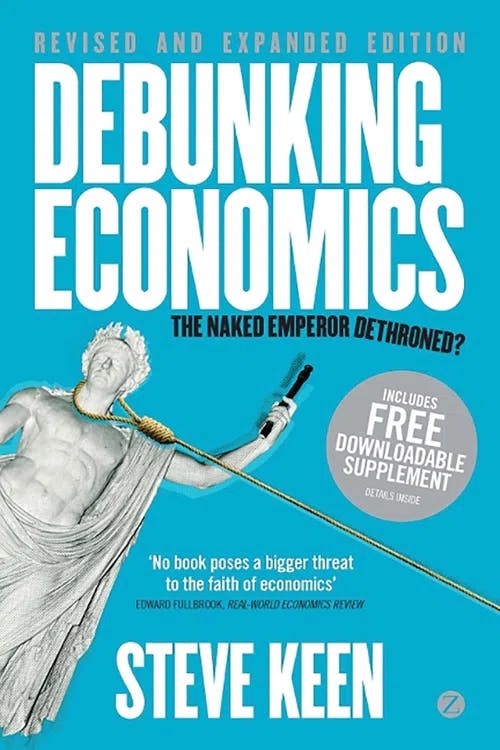What is the Labor Theory of Value?
MA, Sociology (Freie Universität Berlin)
Date Published: 28.06.2023,
Last Updated: 19.07.2024
Share this article
Defining the labor theory of value
The labor theory of value refers to the notion that all value created within capitalist society is derived from human labor. It is a concept that originated with the classical economists, Adam Smith and David Ricardo, who argued that the price of a given commodity should be proportional to the amount of human effort that goes into producing it. As Smith asserts in The Wealth of Nations (1776, [2021),
Labour was the first price, the original purchase-money that was paid for all things. It was not by gold or by silver, but by labour, that all the wealth of the world was originally purchased.
Adam Smith
Labour was the first price, the original purchase-money that was paid for all things. It was not by gold or by silver, but by labour, that all the wealth of the world was originally purchased.
While the labor theory of value can trace its origins back to the works of the classical economists, it is most heavily associated with Karl Marx, who elaborated on the labor theory of value as a central dimension of his critique of capitalist political economy. For Marx, the value of all commodities can be traced back to labor, and capital itself represents the collective value of human labor power in abstract form.
This idea may sound strange at first, but Marx carefully builds up his argument through the pages of Das Kapital (1867–94, [2012]) in order to arrive at this influential conclusion. He invites us to look beneath the surface of what’s going on in the market in order to better understand the way that society is organized with respect to the labor theory of value,
Let us therefore, in company with the owner of money and the owner of labour-power, leave this noisy sphere, where everything takes place on the surface and in full view of everyone, and follow them into the hidden abode of production, on whose threshold there hangs the notice, ‘No admittance except on business’. Here we shall see, not only how capital produces but how capital itself is produced. The secret of profit-making must at last be laid bare. (1867–94, [2012])
Karl Marx
Let us therefore, in company with the owner of money and the owner of labour-power, leave this noisy sphere, where everything takes place on the surface and in full view of everyone, and follow them into the hidden abode of production, on whose threshold there hangs the notice, ‘No admittance except on business’. Here we shall see, not only how capital produces but how capital itself is produced. The secret of profit-making must at last be laid bare. (1867–94, [2012])
Using the method of dialectical materialism for which he is famous, Marx starts by taking concepts associated with market economies that we might normally take for granted — commodities, wages, profits and so on — and examines them in relation to one another to arrive at deeper insights about the way that capitalism as a whole functions. This study guide offers an overview of how Marx developed and expanded upon the labor theory of value in order to unearth the underlying dynamics at play within capitalist societies. From there, we can better appreciate the legacy of his work on the labor theory of value and also reflect on the critiques associated with it.
How Marx developed the labor theory of value
As a historical materialist, Marx believed that every society throughout history was defined by the ways in which it produced and allocated goods and services. He argues that understanding these underlying forces is essential for discerning how a given society is organized and how power is distributed within it. More specifically, Marx highlights the significant role played by those who make the food, clothing, and shelter required for society to function. Despite the importance of their work, these people are often in the lowest rungs of society. As Marx and Engels observe in The Communist Manifesto (1848, [2014]),
In the earlier epochs of history, we find almost everywhere a complicated arrangement of society into various orders, a manifold gradation of social rank. In ancient Rome we have patricians, knights, plebeians, slaves; in the Middle Ages, feudal lords, vassals, guild masters, journeymen, apprentices, serfs; in almost all of these classes, again, subordinate gradations.
Karl Marx and Friedrich Engels
In the earlier epochs of history, we find almost everywhere a complicated arrangement of society into various orders, a manifold gradation of social rank. In ancient Rome we have patricians, knights, plebeians, slaves; in the Middle Ages, feudal lords, vassals, guild masters, journeymen, apprentices, serfs; in almost all of these classes, again, subordinate gradations.
In many cases, Marx observes that labor produces surpluses beyond what is needed at the subsistence level, and he is interested in who benefits from these surpluses. For instance, in societies that had slavery, the masters benefited. In societies based on serfdom, lords and vassals did.
Under capitalism, Marx argues that employees produce surpluses and their employers profit from it. In Das Kapital, Marx explores how commodities assume value on the market, how wages are calculated, and which mechanisms capitalists use to produce surpluses that translate into profits. The following sections explore these key concepts, as well as how Marx uses them to develop the labor theory of value. Marx’s conclusions have galvanized mass movements, and inspired many subsequent scholars who have expanded upon his work.
Commodities, use values, and exchange values
Das Kapital begins with an analysis of the concept of commodities. For Marx, in the simplest terms, commodities are objects created in the sphere of production (e.g. in factories) and then sold to consumers for a profit. He was interested in how value is ascribed to these inanimate objects within capitalist societies and, from there, how they are priced and exchanged for one another on the market, as mediated by money. To better understand this, he makes the distinction between use values and exchange values.
For Marx, use values refer to the worth of a commodity purely based on its utility in terms of satisfying a particular need or desire. For example, bread and water have use values as sources of sustenance, and a bicycle’s worth lies in the fact that it helps you to get around. Understanding value in this way is not unique to capitalism, as it simply characterizes the importance of different objects based on their functionality. Exchange value, on the other hand, is something that uniquely pertains to market societies.
For Marx, exchange value refers to the worth of an object in relation to other objects that are sold on the market. For example a diamond is considered to be worth much more than bread and water, even though the practical utility of the former would be much lower than that of the latter. Marx was intrigued about the ways in which commodities assume an exchange value, and this is where he takes inspiration from the classical economists’ labor theory of value:
Human labor-power in motion, or human labor, creates value, but is not itself value. It becomes value only in its congealed state when embodied in the form of some object. (Marx, Das Kapital, 1867–94, [2012])
In other words, it is human labor that makes a commodity worth more than the raw materials it is made from. This idea would explain, for instance, why a chair handcrafted by an artisan would be more valuable than a mass-produced one manufactured by IKEA. In the simplest terms then, all value that makes a commodity worth more than the sum of its parts is derived from the amount of labor power that went into making it.
(For more on how value is ascribed to objects within capitalist societies, you can explore our “What is commodity fetishism?” study guide.)
Labor and wages
In more specific Marxian terms, value is derived from the average amount of “socially necessary labor time” that goes into producing a given commodity. Marx calls this “abstract labor” — as labor is measured here as an abstract average, rather than a specific instance. Marx defines this “labor-power” as
the aggregate of those mental and physical capabilities existing in a human being which he exercises whenever he produces a use-value of any description. (1867–94, [2012])
Here, it is important to note that labor power itself is treated as a peculiar kind of commodity in the market, as it is sold by the worker and bought by the capitalist within the sphere of production. This can be understood best from the capitalist’s perspective, as he uses his capital to purchase both raw materials and machines (known as fixed capital) as well as labor power (known as variable capital) which together are necessary to produce commodities for a profit.
To understand what this means, it’s also useful to look at a real-life case. Continuing with our above example of the chair production, whether the factory owner is paying artisans or assembly line workers, he’ll need to purchase the wood, supplies, and the tools or machines that go into making the chairs in question. In addition, the factory owner must also hire and pay for the labor power that will take these materials and tools and turn them into chairs that he can sell on the market for a profit. We understand this cost of the commodity of labor power as the worker’s pay, in the form of wages — traditionally broken down into hours of time the worker spends in the service of her employer.
As a baseline understanding then, one would think that the exchange value of a commodity on the market would be equal to the costs of the materials that went into making it plus the wages of the labor power used to produce it. Yet, this is not so. Rather, Marx observes that when the factory owner invests the capital required to produce a commodity, he somehow ends up with more capital than he started with.
Surplus value
In fact, the whole point of the factory owner engaging in this production process is to turn a profit. If he is a good businessman, his entire goal is to invest the capital necessary to produce the chairs so that he will come out making more money than he put into this endeavor. Marx ironically quips that this process of creating surplus value through commodity production
has acquired the occult quality of being able to add value to itself. It brings forth living offspring or, at the least, lays golden eggs. (1867–94, [2012])
Being a dialectical materialist, Marx is not satisfied with the idea that the commodity production process just magically produces more capital than the capitalist starts out with. For Marx, surplus value can only be derived from labor power itself, which is what turns raw materials into something that can be sold for more money on the market. In this way, labor power produces value at a higher rate than it costs to pay the workers. In fact, surplus value — in other words, profit — can be understood precisely as the difference in the value created through labor and the price paid to the laborers in the form of wages.
In Das Kapital, Marx demonstrates two ways that surplus value can be generated: in the form of absolute and relative surplus value. Both cases show how the worker produces more value than she is paid. Generating absolute surplus value occurs through lengthening the working day. As Marx explains it,
the capitalist can, instead of five shillings, pay the laborer four shillings and six pence or even less. For the reproduction of this value of four shillings and six pence, nine hours labor-time would suffice; and consequently three hours of surplus-labor, instead of two, would accrue to the capitalist, and the surplus-value would rise from one shilling to eighteen pence. This result, however, would be obtained only by lowering the wages of the laborer below the value of his labor-power. (1867–94, [2012])
Karl Marx
the capitalist can, instead of five shillings, pay the laborer four shillings and six pence or even less. For the reproduction of this value of four shillings and six pence, nine hours labor-time would suffice; and consequently three hours of surplus-labor, instead of two, would accrue to the capitalist, and the surplus-value would rise from one shilling to eighteen pence. This result, however, would be obtained only by lowering the wages of the laborer below the value of his labor-power. (1867–94, [2012])
Thus, the worker is essentially paid for only 9 out of the 12 hours that she actually works. The other 3 hours are unwaged and dedicated solely to producing surplus value for the capitalist.
Meanwhile, relative surplus value refers to increasing the rate of productivity so that the worker can produce more commodities during her shift, and thus generate a higher overall proportion of surplus value. This is often achieved through technological advancements, which drive down the costs of labor by decreasing the amount of socially necessary labor time required to produce it. Returning to our chair example, it’s clear that mass-producing chairs through assembly line production at IKEA is significantly more profitable than producing them artisanally, due to the sheer scale and speed at which chairs can be made. Workers, then, are able to reproduce their value much faster, and a higher proportion of their working day is therefore allocated to producing surplus value for their bosses.
(You can read more about assembly line production in our study guide, “What is Fordism?”.)
Implications of the labor theory of value: profit, power, and exploitation
If both of these examples sound rather exploitative or unfair to the worker, this is exactly Marx’s point. He argues that capitalists don’t just appropriate the surplus value the workers produce in the form of profit, but actively adjust the production process to increase the proportion of surplus value at the expense of the workers. Putting all of the aforementioned concepts together, Marx argues that the surplus value produced by the workers’ labor power congeals in the form of profits (capital) extracted by their employer:
Capital is dead labor, which, vampire-like, lives only by sucking living labor, and lives the more, the more labor it sucks. (1867–94, [2012])
Now that we have covered how Marx developed the labor theory of value, we can begin to see some of its political implications.
Recall that Marx was interested in how surpluses are allocated within a given society because he believed that this tells us how power is distributed within it. While he may have taken the work of classical economists like Adam Smith and David Ricardo as his starting point when developing the labor theory of value, he was very critical of their writing because it tended to obscure questions of power and the asymmetries that existed between the social classes — in the case of capitalist societies, between that of capital and labor. As a result, Marx felt that the classical economists took these arrangements as a given rather than interrogating why this exploitative dynamic exists in the first place. As David Harvey emphasizes in A Companion To Marx’s Capital,
This is what the bourgeois political economists have done: they have treated value as a fact of nature, not a social construction arising out of a particular mode of production. What Marx is interested in is a revolutionary transformation of society, and that means an overthrow of the capitalist value-form, the construction of an alternative value-structure, an alternative value-system that does not have the specific character of that achieved under capitalism. (2018)
David Harvey
This is what the bourgeois political economists have done: they have treated value as a fact of nature, not a social construction arising out of a particular mode of production. What Marx is interested in is a revolutionary transformation of society, and that means an overthrow of the capitalist value-form, the construction of an alternative value-structure, an alternative value-system that does not have the specific character of that achieved under capitalism. (2018)
This is really the crux of what Marx is getting at through his development of all the concepts outlined above in relation to the labor theory of value. The exploitation of labor in order to produce a surplus for capital is something that he vehemently argued against and believed ought to be transformed. He was a staunch advocate for galvanizing the working classes, and in The Communist Manifesto he calls for the overthrow of the capitalist class in order to create a more egalitarian system.
The legacy of Marx’s labor theory of value
In turn, Marx’s labor theory of value has had a significant influence in the arenas of labor struggle, politics, and academia.
The notion that workers are those who create all value in the economy has been a rallying cry for labor organizations, as it empowers workers to become more conscious of their importance within the capitalist mode of production. For example, unions function by organizing workers in order to collectively bargain — based on the knowledge that their labor is essential to the production process and, therefore, to the profit-making of their employers. The labor theory of value is also the basis of why striking is an effective tool for workers to use in leveraging their own demands. As Marx and Engels famously put it in the The Communist Manifesto,
The proletarians have nothing to lose but their chains. They have a world to win. WORKING MEN OF ALL COUNTRIES, UNITE! (1848 [2014])
In more radical terms, the labor theory of value has been instrumental in the development of socialist and communist political thought. It is foundational to the idea that workers are the backbone of the capitalist production process, and that the owners of the means of production do little more than exploit the fruits of their labor. Under this premise, socialists and communists respectively argue that the powers of the capitalist class to exploit labor must be either curtailed or transformed entirely towards collective ownership of the means of production by the workers themselves. These views have played out in many different contexts, ranging from Marxism-Leninism, the Bolshevik Revolution, and the establishment of the Soviet Union, to social democratic politics in Europe, and leftist struggles throughout Asia, Latin America, and beyond.
In the academic arena, a growing array of Marxian scholars have also been influenced by his work on the labor theory of value. These include Marxist feminists such as Silvia Federici, Lise Vogel, and Nancy Fraser, who argue that women’s unpaid labor under capitalism must also be accounted for in the labor theory of value. Other thinkers like Antonio Gramsci and Louis Althusser use the labor theory of value to understand the ways in which society is organized around the exploitative dynamic between capital and labor, as well as how this structure is obscured by ideology. Finally, Marxist theorists such as Rosa Luxemburg and, more contemporaneously, David Harvey, explore the ways in which the labor theory of value connects with the drive towards imperialist expansion (with capital seeking out cheaper sources of labor).
Critiques of the Marxian labor theory of value
While the labor theory of value has been influential in many subsequent currents of Marxian scholarship, as well as in the political arena, it is not without its criticisms. For one, neoclassical economists argue that the prices of commodities result from other significant factors beyond the labor put into producing them — such as fluctuations in supply and demand. Marxist scholars contend, however, that price and value are not to be conflated. They maintain that value is something more qualitative and abstract: the product of socially necessary labor time. They do, however, agree that price, a quantifiable concept distinct from but linked to value, can fluctuate on the market based on numerous other factors.
Furthermore, other scholars such as economist Steve Keen point to the fact that labor-intensive industries (such as textile manufacturing) are in fact not inherently more profitable than capital-intensive ones (such as the manufacture of technological goods like laptops and smartphones). As Keen explains,
If the rate of surplus value is constant across industries, and labor is the only source of surplus, then industries with a higher than average ratio of labor to capital should have a higher rate of profit. Yet if a capitalist economy is competitive, this situation cannot apply in equilibrium, because higher rates of profit in labor-intensive industries should lead to firms moving out of capital-intensive industries into labor-intensive ones, in search of a higher rate of profit. (2011)
Steve Keen
If the rate of surplus value is constant across industries, and labor is the only source of surplus, then industries with a higher than average ratio of labor to capital should have a higher rate of profit. Yet if a capitalist economy is competitive, this situation cannot apply in equilibrium, because higher rates of profit in labor-intensive industries should lead to firms moving out of capital-intensive industries into labor-intensive ones, in search of a higher rate of profit. (2011)
Keen therefore concludes that “beyond labor being the only source of value, all inputs to production are potential sources of value,” including, for instance, sources of fixed capital such as the quality of raw materials or other technologies that go into making a given commodity.
Finally, critics of the Marxian labor theory of value such as Shimshon Bichler and Jonathan Nitzan (in Capital as Power, 2009) argue that the ways that wages are calculated in relation to the exchange value of a commodity is hard to prove empirically. Specifically, they contend that it is difficult to break down or quantify precisely how much value a worker produces in relation to their wage. This is especially the case in contemporary capitalism, as it features increasingly complex globalized supply chains and abstract forms of financialized capitalism that are a far departure from the days in which Marx was writing on the labor theory of value in the 19th century.
Closing thoughts
The labor theory of value is a concept developed by Karl Marx which argues that the value of all commodities is derived from the labor that goes into making them. He used the method of dialectical materialism to analyze how the constituent parts of market economies function, in order to arrive at deeper insights about what defines capitalist societies. In fact, as David Harvey argues, understanding the labor theory of value is foundational for appreciating the thrust of Marx’s critique of capitalist political economy more broadly,
The value-form of the product of labour is the most abstract, but also the most universal form of the bourgeois mode of production; by that fact it stamps the bourgeois mode of production as a particular kind of social production of a historical and transitory character. If then we make the mistake of treating it as the eternal natural form of social production, we necessarily overlook the specificity of the value-form, and consequently of the commodity-form together with its further developments, the money form, the capital form, etc. (2018)
With his development of the labor theory of value, Marx argues that labor’s capacity to produce value is exploited by capital to produce profits. For Marx, all of this has major political implications because it means that the working class is actually the backbone of all wealth produced by society, and that the capitalists are little more than “vampires” who feed off their employees’ powers to produce value. With his development of the labor theory of value, then, Marx provided a radical new way of interpreting the power dynamics within capitalist societies.
Further reading on Perlego
Dooley, P.C. (2005) The Labour Theory of Value. Routledge. Available at: https://www.perlego.com/book/716019/the-labour-theory-of-value-pdf
Mandel, E. (2021) Introduction to Marxist Theory. Resistance Books. Available at: https://www.perlego.com/book/2922298/introduction-to-marxist-theory-pdf
Musto, M. (ed.) (2008) Karl Marx’s Grundrisse. Routledge. Available at: https://www.perlego.com/book/717802/karl-marxs-grundrisse-pdf
Nain, A. & Jung, P.G. (2021) Understanding Money. Routledge India. Available at: https://www.perlego.com/book/2528427/understanding-money-philosophical-frameworks-of-monetary-value-pdf
Rosdolsky. R. (1992) The Making of Marx's Capital Volume 1. Pluto Press. Available at: https://www.perlego.com/book/665494/the-making-of-marxs-capital-volume-1-pdf
What is the labor theory of value in simple terms?
What is an example of the labor theory of value?
Who are scholars associated with the labor theory of value?
Bibliography
Bichler, S. & Nitzan, J. (2009) Capital as Power. Routledge. Available at: https://www.perlego.com/book/1608036/capital-as-power-a-study-of-order-and-creorder-pdf
Harvey, D. (2018) A Companion To Marx's Capital. Verso. Available at: https://www.perlego.com/book/827854/a-companion-to-marxs-capital-the-complete-edition-pdf
Keen, S. (2011) Debunking Economics. Zed Books. Available at: https://www.perlego.com/book/2011942/debunking-economics-the-naked-emperor-dethroned-pdf
Marx, K. (1990) Capital Vol. I. Penguin Books.
Marx, K. & Engels F. (2014) The Communist Manifesto. HarperTorch. Available at: https://www.perlego.com/book/602671/the-communist-manifesto-pdf
Marx, K. (2012) Das Kapital. Gateway Editions. Available at: https://www.perlego.com/book/784600/das-kapital-a-critique-of-political-economy-pdf
Smith, A. (2021) The Wealth of Nations. Icarsus. Available at: https://www.perlego.com/book/2628240/wealth-of-nations-pdf
Whitaker, A.C. (2019) History and Criticism of the Labor Theory of Value in English Political Economy. Columbia University Press. Available at: https://www.perlego.com/book/1359500/history-and-criticism-of-the-labor-theory-of-value-in-english-political-economy-pdf
MA, Sociology (Freie Universität Berlin)
Lily Cichanowicz has a master's degree in Sociology from Freie Universität Berlin and a dual bachelor's degree from Cornell University in Sociology and International Development. Her research interests include political economy, labor, and social movements. Her master's thesis focused on the labor shortages in the food service industry following the Covid-19 pandemic.





